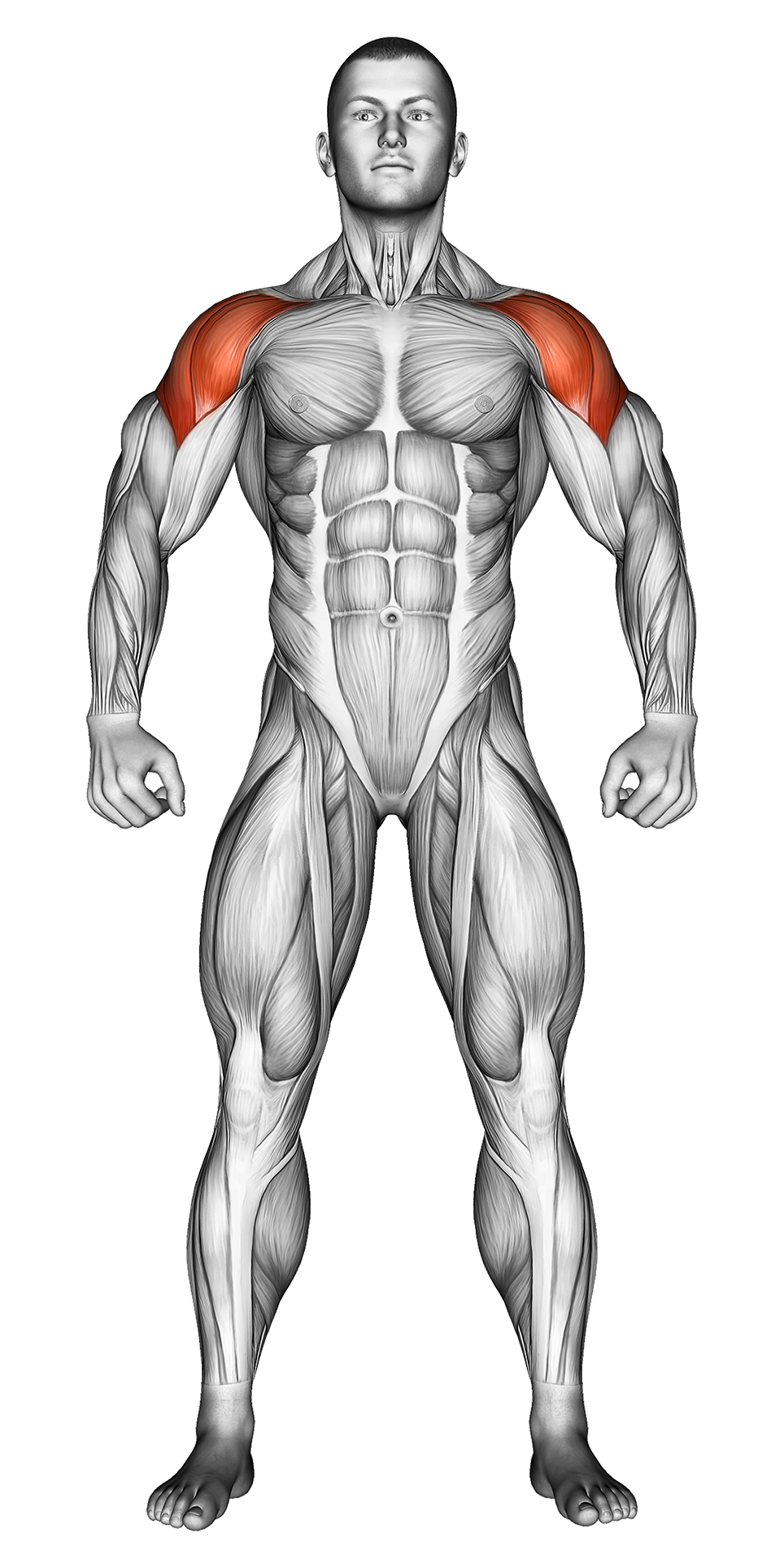Dumbbell External Rotation: Video Tutorial & Exercise Guide
| Workout | Dumbbell External Rotation |
| Primary Muscle Group | Shoulders |
| Secondary Muscle Group | None |
| Equipment Required | Dumbbell |
| Force Type | Pull |
| Mechanics | Isolation |
| Exercise Type | Strength and Mobility |
| Difficulty | Beginner |
Dumbbell External Rotation: Video Tutorial & Exercise Guide
Muscle Groups
- Primary Muscle Group- Secondary Muscle Group
Dumbbell External Rotation - Step-by-Step Guide
Dumbbell External Rotation Overview
Benefits of Dumbbell External Rotation
Dumbbell External Rotation Pro Tips & Advanced Techniques
Progression Plan for Dumbbell External Rotation
Frequently Asked Questions (FAQs) Of Dumbbell External Rotation
How to do Dumbbell External Rotation – Step-by-Step Guide
- Step 1: Sit on a bench or stand with your feet shoulder-width apart. Hold a light dumbbell in one hand, bending your elbow at a 90-degree angle so that your forearm is parallel to the floor, and your upper arm is close to your body.
- Step 2: Rest your elbow against your side or place a small towel between your elbow and torso to keep it stable throughout the movement.
- Step 3: Slowly rotate your forearm outward, keeping your elbow in place, until your forearm is in line with your torso or as far as your shoulder mobility allows.
- Step 4: Pause briefly at the top of the movement, then reverse the motion by rotating your forearm back to the starting position, keeping the movement controlled and smooth.
- Step 5: Repeat for the desired number of reps before switching to the other arm.
Dumbbell External Rotation Overview
The Dumbbell External Rotation is an essential exercise for strengthening the rotator cuff muscles, particularly the infraspinatus and teres minor, which are responsible for shoulder external rotation. This exercise is ideal for improving shoulder stability, mobility, and reducing the risk of injury, especially for athletes or those involved in overhead movements.
Performing this exercise with a dumbbell allows for smooth, controlled movements that target the small stabilizing muscles in the shoulder, helping to improve functional strength and prevent common shoulder injuries like impingement or rotator cuff tears.
Benefits of Dumbbell External Rotations
Dumbbell External Rotations primarily target the rotator cuff muscles, particularly the infraspinatus and teres minor. Strengthening these muscles helps to stabilize the shoulder joint and improve shoulder mobility, which is crucial for preventing injuries, especially during overhead movements like presses and throws.
This exercise improves shoulder function and promotes better posture by enhancing the strength of the muscles that stabilize the shoulder blades. It also aids in recovery from shoulder injuries and can be used in rehabilitation programs to restore shoulder strength and mobility.
Dumbbell External Rotations: Pro Tips & Advanced Techniques
Keep your elbow tucked into your side to isolate the rotator cuff muscles and avoid compensating with your deltoids. Focus on a slow, controlled movement to engage the muscles fully. To increase intensity, hold the top position for 1-2 seconds or use a heavier dumbbell as your shoulder strength improves. Ready to protect and strengthen your shoulders? Let’s rotate!
Progression Plan for Dumbbell External Rotations
| Level | Sets | Reps | Progression Tips |
|---|---|---|---|
| Beginner | 2 | 10-12 per arm | Start with a light dumbbell to focus on form and control. Ensure your elbow stays tucked into your side, and avoid using momentum to rotate your arm. |
| Intermediate | 3 | 12-15 per arm | Gradually increase the weight as your shoulder strength improves. Hold the top position for a brief second to enhance muscle engagement. |
| Advanced | 3-4 | 15-18 per arm | Use heavier weights and perform slower reps to increase time under tension. For an added challenge, try performing the exercise lying on your side to further isolate the rotator cuff muscles. |
Frequently Asked Questions (FAQs) of Dumbbell External Rotation
What muscles do Dumbbell External Rotations target?
This exercise primarily targets the rotator cuff muscles, particularly the infraspinatus and teres minor, which are responsible for shoulder external rotation and stabilization.
Are Dumbbell External Rotations suitable for beginners?
Yes, Dumbbell External Rotations are great for beginners, especially those looking to strengthen their shoulder stabilizers and improve shoulder health. Start with light weights and focus on controlled, slow movements.
How can I make Dumbbell External Rotations more challenging?
To increase difficulty, use a heavier dumbbell or slow down the rotation to increase time under tension. You can also try holding the top position for a few seconds to further engage the rotator cuff muscles.
How often should I include Dumbbell External Rotations in my routine?
Include this exercise 2-3 times per week as part of your shoulder or upper body workout. It pairs well with other rotator cuff exercises like internal rotations or shoulder raises for a complete shoulder stability routine.
What common mistakes should I avoid?
Avoid letting your elbow drift away from your side, as this reduces the effectiveness of the movement. Also, avoid using too much weight, which can lead to jerky movements and strain on the shoulder joint.
Share
